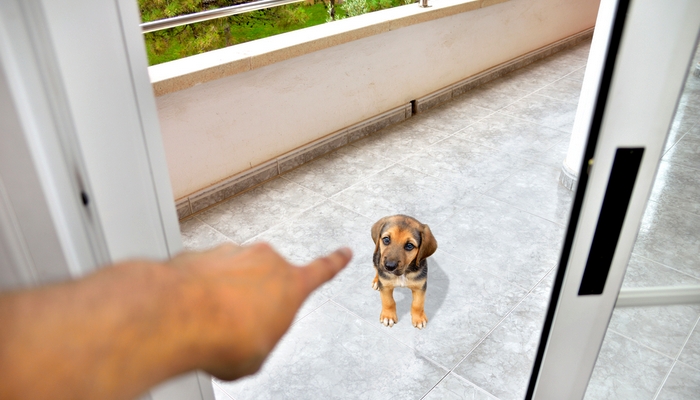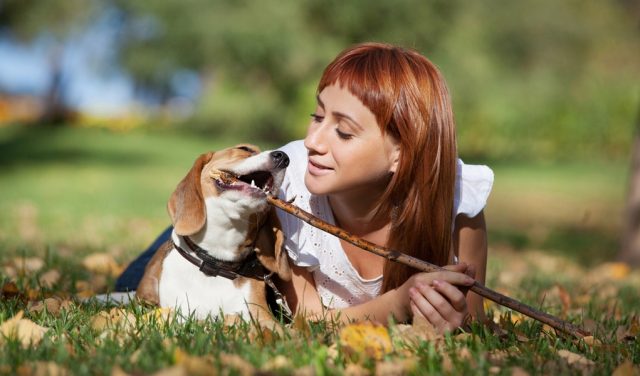
Table of Contents
- 15 Most Common Mistakes Even the Best Dog Owners Can Make
- 1 Ineffective or Harmful Dog Training
- 2 Neglect in Public Spaces
- 3 No Proper Supervision
- 4 Not Cleaning Up After Dogs
- 5 Unnecessary or Shady Dog Products
- 6 Improper Feeding
- 7 Not Spending Money When It Counts
- 8 Not Being Proactive
- 9 Buying Wrong Dog Supplies
- 10 Wrong Expectations About Grooming
- 11 Neglecting Dog's Teeth
- 12 Forgetting to Clip Nails
- 13 Ignoring Temperature Control
- 14 Skipping Obedience School
- 15 Setting Up Dogs to Fail
Getting a new dog is exciting, especially if you've never had a pet before. You can't expect to be a perfect dog owner from the get-go, but it'll save you time and effort to learn from other people's mistakes. Even the most well-intentioned dog owner might be guilty of some of these common mistakes. As they say, it takes a village to raise a child—even a furry one.
We already know that owning a dog can really add value and joy to one's life, but it requires a certain investment of both money and time; it's a serious commitment. If you pick the wrong dog breed or neglect some essential aspects of pet care and dog training, that can have a significant impact on your newly adopted pet's health or behavior.
Statistics show that 30% of dog owners give up their pets simply because of perceived behavioral problems, as per Ohio State University. Looking at it closer, all of this could've been avoided if only new pet owners knew a few more things about dog ownership and set their expectations right.
Before you bring a dog home, you need to build your village. Chat with experienced dog owners, ask for their advice, and research dog care websites for information. Find a veterinarian, groomer, pet sitter, and any other professional that you may need in your corner. It won't help you to avoid every mistake, but you'll be better prepared for any issues that will arise. So here are the 15 most common mistakes that many dog owners make and how to avoid them.
ALSO READ: 15 Must-Know Tips for New Dog Owners
15 Most Common Mistakes Even the Best Dog Owners Can Make
1 Ineffective or Harmful Dog Training
Using the wrong type of training for your dog isn't just a waste of time; it can actually be harmful and dangerous for both you and the dog. Science has proven, and dog trainers now emphasize, how focusing on punishment can cause fear, anxiety, and aggression in canines and even damage your relationship forever.
Just because you saw it on TV or read it on the Internet, that doesn't mean it will work for you or your dog. Look for science-based advice and build on what works for you. Make sure everyone in the house is on the same page, too. The current consensus is that the most effective dog training methods are operant conditioning, positive reinforcement, and clicker training.
2 Neglect in Public Spaces
Dog parks sound like a dog's idea of paradise, but any public space can have its dangers. Just because you've socialized your dog to be comfortable and well-behaved with other animals, that doesn't mean other owners have put in the same effort. Dogs can still get into fights and get hurt – just read some of these dog park horror stories.
Teach your dog to be cautious and to stay close to you in public. Avoid unfamiliar public situations until your pet has the training to obey you, even when he's excited. Be aware of how much noise your dog makes at home too, so he doesn't disturb your neighbors. If you're going to a dog park, then there are certain rules you and your pup need to know.
3 No Proper Supervision
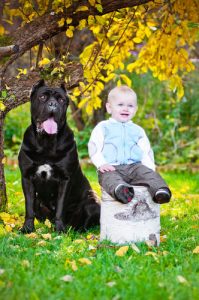 All vets urge dog owners not to leave a child under 10 years old unsupervised with a dog. This rule applies to family members and your family dog, too. You can never be completely certain how even the friendliest dog is going to behave when he’s scared or threatened, and you never know what a child might do that a dog might find unpredictable.
All vets urge dog owners not to leave a child under 10 years old unsupervised with a dog. This rule applies to family members and your family dog, too. You can never be completely certain how even the friendliest dog is going to behave when he’s scared or threatened, and you never know what a child might do that a dog might find unpredictable.
Statistically, dog aggression is most observed in cases with children, and when kids neglect signs of a dog that can potentially bite due to fear, aggression, or simply being annoyed. As a result of this, dogs became the second most dangerous animal in America today.
The same applies to strangers meeting your pup. Some dog owners seem to take their canine companions everywhere. While an emotional bond like that is admirable, not everyone shares our passion. Some people aren't comfortable around dogs at all, and that fear can confuse a dog. Teach your dog to sit and get to know strangers gradually.
Don't encourage strangers to pet your dog right away, either. It's important to socialize your pet so he behaves properly with new people, but he can't learn to respect a stranger's space if he has no personal space of his own. The same applies to kids, and even more so, and all dogs must learn how to behave around children.
4 Not Cleaning Up After Dogs
It might surprise you, but in a LawnStarter survey of more than 700 people, almost 1 in 10 chose dogs as their top complaint. A Consumer Reports survey in 2010 found that dog poop was the sixth biggest complaint of Americans, and as an interesting tidbit, a 2013 survey from Public Policy Poling (PDF) found had Americans had a higher opinion of dog poop (47%) than of Congress (40%).
In short, dog waste is a problem, and some pet owners neglect this fact.
An issue with a badly trained dog is perfectly understandable, but many are annoyed just by normal dog behavior. What can be more natural than a dog going to the bathroom outside, up against a tree, or on a fence? If you don't want to give dogs a bad name, clean up after your pet—carry poop bags and a poop scooper for easy clean-up—and teach your pooch not to trespass on private property.
5 Unnecessary or Shady Dog Products
If you ask someone with a vested interest in selling you a product, it's pretty likely they're going to up-sell you on something you don't need or try to get you to spend more money than necessary. Shopping online can be helpful and can save you money. For example, pharmaceuticals can be 10–20 percent cheaper online, and there are a number of places to find cheap dog meds, but be sure to check that the seller is a Verified Internet Pharmacy Practice Site.
Do some research and ask around, but consider the source of the information. Ask other dog owners about the pet supplies they use and which ones they found completely useless. If you're shopping for something specific, ask a professional in the field or do some evidence-based research. For example, if you're trying to find the best pet brush for your dog, consider asking a professional pet groomer for helpful advice.
RELATED: 5 Premium Quality Dog Supplies That Are NOT Worth the High Cost
6 Improper Feeding
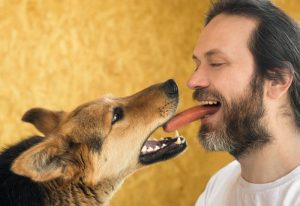 Some pet owners assume that dog food and love are the same thing, but doggy treats aren't the only way to reward your pooch, and you shouldn't overfeed him. Letting your Fido get overweight will shorten his life. That's not love. The most expensive dog food brands aren't always the healthiest option, either.
Some pet owners assume that dog food and love are the same thing, but doggy treats aren't the only way to reward your pooch, and you shouldn't overfeed him. Letting your Fido get overweight will shorten his life. That's not love. The most expensive dog food brands aren't always the healthiest option, either.
While homemade dog food can be very healthy, home-cooked diets that aren't correctly balanced for nutrition can do more harm than good. The same applies to raw food diets—when done right, they're great; when it's done wrong, they can be dangerous to both dogs and their owners. Dogs need a healthy, well-balanced diet and lifestyle. It's up to the owner to research the safety of pet food preparation, control portions, and make sure the dog gets enough exercise to burn off those extra calories consumed.
7 Not Spending Money When It Counts
When it's wasteful to spend hard-earned cash on certain dog supplies, there are others that can be essential for the pet. Moreover, cheap products can sometimes be more expensive in the long term. Cheap dog food can obviously cause expensive health problems. Did you know that over-the-counter, spot-on flea and tick treatments can cause serious health issues, too, due to certain chemicals? Human medications might be cheaper, but if you don't know what you're doing, they can be toxic and deadly to your dog.
Don't wait until the last minute when it's really serious to take your Fido to the vet. Mistakes like that can be fatal. Health insurance can also be a great investment, so you don't have to worry about costs in an already difficult period, but it's not always the most viable option for every pet owner.
RELATED: 8 Cancer-Causing Dog Products (and how to avoid them)
8 Not Being Proactive
The best way to avoid health problems is to prevent them in the first place. A routine veterinary check-up, once or twice a year, is an opportunity to review your dog's overall health, diet, and lifestyle, and not just catch up on vaccinations and deal with obvious problems. This becomes even more essential when dogs are more than eight years old. Your veterinarian can advise you on better dog care and how to start adjusting your aging pet's lifestyle to avoid problems in the future. Talk to a canine nutritionist to optimize your dog's diet and prolong his lifespan.
9 Buying Wrong Dog Supplies
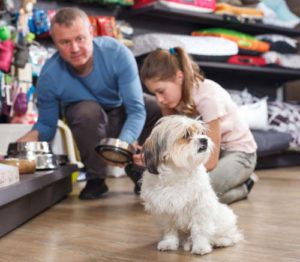 While they fit dogs in some (very rare) cases, for a majority of pet owners and their canines, things like choke collars are a definite no-no. Retractable leashes might look like a great idea to give your dog more freedom, but the stopping mechanism isn't always trustworthy, especially over time. The wrong type of collar, harness, or leash can hurt your dog and cause other health problems, even tracheal collapse.
While they fit dogs in some (very rare) cases, for a majority of pet owners and their canines, things like choke collars are a definite no-no. Retractable leashes might look like a great idea to give your dog more freedom, but the stopping mechanism isn't always trustworthy, especially over time. The wrong type of collar, harness, or leash can hurt your dog and cause other health problems, even tracheal collapse.
Some dogs, including certain breeds altogether, have particular needs too. It may be due to their anatomy or a pre-existing health problem, in which case collars should be used only for identification. A flat leash that isn't more than six feet long with a head collar or no-pull dog harness is your safest option, but nothing is a substitute for training a dog to stay close and not to pull.
Lack of control is how dogs can end up getting in a fight or running into traffic, even when they're leashed. It can also be harmful or dangerous for the owners to be pulled around.
10 Wrong Expectations About Grooming
It seems like the cheapest choice to groom your dog is by doing it yourself, but there are safety precautions that must be followed. Using the wrong type of grooming products, rubbing in dog shampoo too vigorously, or too much towel drying afterward can mat or damage canine's hair, even with short-haired dogs, and generally put your dog off from future grooming.
Dog hair tangles aren't just ugly. They cause bruises from that constant pulling. For some dogs, shaving the coat isn't just stylish, it's necessary for comfort and health. It can even affect their personality and daily behavior.
However, shaving isn't an option for every dog or even most dogs. Do you see the pattern here? At-home pet grooming is a great way to save money, but only if you really know what you're doing. It takes time to learn how to properly groom your dog, not to mention the time you'll spend actually doing it.
11 Neglecting Dog's Teeth
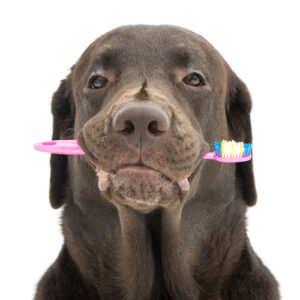 Almost every dog owner is guilty of this, but teeth brushing should be part of your daily routine or at least several times per week. The sad fact is that most dogs over three years old already show signs of gum disease and other dental problems, which can cause a host of other health problems that are painful for your pet and expensive for you.
Almost every dog owner is guilty of this, but teeth brushing should be part of your daily routine or at least several times per week. The sad fact is that most dogs over three years old already show signs of gum disease and other dental problems, which can cause a host of other health problems that are painful for your pet and expensive for you.
Getting yourself and your Fido into a regular teeth-brushing routine is one of the best things you can do for your dog's overall health and well-being. Many pet owners are too lazy to brush their dogs' teeth, but what they don't understand is how many diseases and health issues can be avoided just by brushing your dog's teeth a few times a week.
12 Forgetting to Clip Nails
How often you should clip your dog's nails will depend on how fast they grow and the types of surfaces your pooch usually walks on. The rough ground will grind down the nails and shorten them, thereby giving you some extra time before you have to groom your pooch again, but don't depend on that too much.
Cutting your dog's nails is essential, however. Long nails can cause serious paw and toe problems. It can also be more dangerous when your dog is extra playful with you or particularly small kids. If you aren't confident about doing a good job, book regular appointments with a groomer or veterinarian.
13 Ignoring Temperature Control
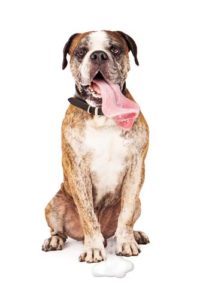 We've all heard that it can be deadly to leave dogs in your car. It's even considered a form of animal abuse. Many pet owners don't realize that dogs can overheat in the backyard, too, especially long-haired breeds, breeds with thick or double coats, and senior dogs.
We've all heard that it can be deadly to leave dogs in your car. It's even considered a form of animal abuse. Many pet owners don't realize that dogs can overheat in the backyard, too, especially long-haired breeds, breeds with thick or double coats, and senior dogs.
Of course, you need to provide your pet with water and shade, but there are other ways you can help your dog beat the heat, too, including:
- Keep a child-sized swimming pool in the shade with a few inches of water in it – make sure your pet can easily get in and out
- Play in the sprinkler together
- Put ice cubes in the water dish or give your dog frozen treats
- Leave the fan on for your pet
- Limit exercise and outside time to the early morning or late evening on hot days.
- Shave or trim your dog's hair if necessary.
Planning for the weather isn't just a summer thing, either. If it's cold in the winter, a dog's fur might not be enough to keep him warm. He might need a sweater, coat, or even boots, depending on his breed, size, age, and coat type.
14 Skipping Obedience School
Going to an obedience school for some extra training is not essential for every dog (or owner), but it can be very beneficial. For some dogs, it's even essential, but some pet owners assume that obedience training is only for young pups. However, even older dogs and experienced owners can benefit from refresher courses or obedience school. Training should be a life-long, daily activity for you and your pet. Even puppies can start with special classes that focus on socialization.
15 Setting Up Dogs to Fail
Sometimes, a canine's bad behavior is more the owner's fault than the dog's. Don't tempt your pup by leaving dog food unsecured in your kitchen, dog treats lying around, or other items like shoes (if your pooch likes to chew on them) out where he can get them. You're deliberately setting up your own dog to misbehave.
For example, if chewing is the problem, then removing incentives and redirecting your pet's behavior is what you, the pet owner, are obligated to do. Always try to be consistent and predictable, with clear limits and expectations. It's your responsibility to train your dog to do what you want and be understanding and patient when things don't work out the way you want them to after the first few tries.
READ NEXT: 10 Best Dog Breeds for First-Time Owners


